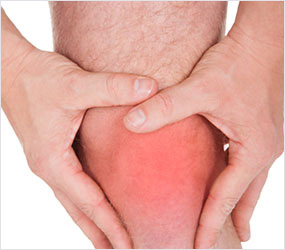
Psoriasis is a disease in which scaly red and white patches develop on the skin. Psoriasis is caused by the body's immune system going into overdrive to attack the skin. Some people with psoriasis can also develop psoriatic arthritis, when the immune system attacks the joints as well, causing inflammation. Like psoriasis, psoriatic arthritis symptoms flare and subside, vary from person to person, and even change locations in the same person over time.
Psoriatic arthritis can affect any joint in the body, and it may affect just one joint, several joints or multiple joints. For example, it may affect one or both knees. Affected fingers and toes can resemble swollen sausages, a condition often referred to as dactylitis. Finger and toe nails also may be affected.
Psoriatic arthritis in the spine, called spondylitis, causes pain in the back or neck, and difficulty bending. Psoriatic arthritis also can cause tender spots where tendons and ligaments join onto bones. This condition, called enthesitis, can result in pain at the back of the heel, the sole of the foot, around the elbows or in other areas. Enthesitis is one of the characteristic features of psoriatic arthritis.
Recent research suggests that persistent inflammation from psoriatic arthritis causes joint damage later, so early accurate diagnosis is essential. Fortunately, treatments are available and effective for most people.

To diagnose psoriatic arthritis, rheumatologists look for swollen and painful joints, certain patterns of arthritis, and skin and nail changes typical of psoriasis. X-rays often are taken to look for joint damage. MRI, ultrasound or CT scans can be used to look at the joints in more detail.
Blood tests may be done to rule out other types of arthritis that have similar signs and symptoms, including gout, osteoarthritis and rheumatoid arthritis. In patients with psoriatic arthritis, blood tests may reveal high levels of inflammation and mild anemia. Occasionally skin biopsies (small samples of skin removed for analysis) are needed to confirm the psoriasis.
